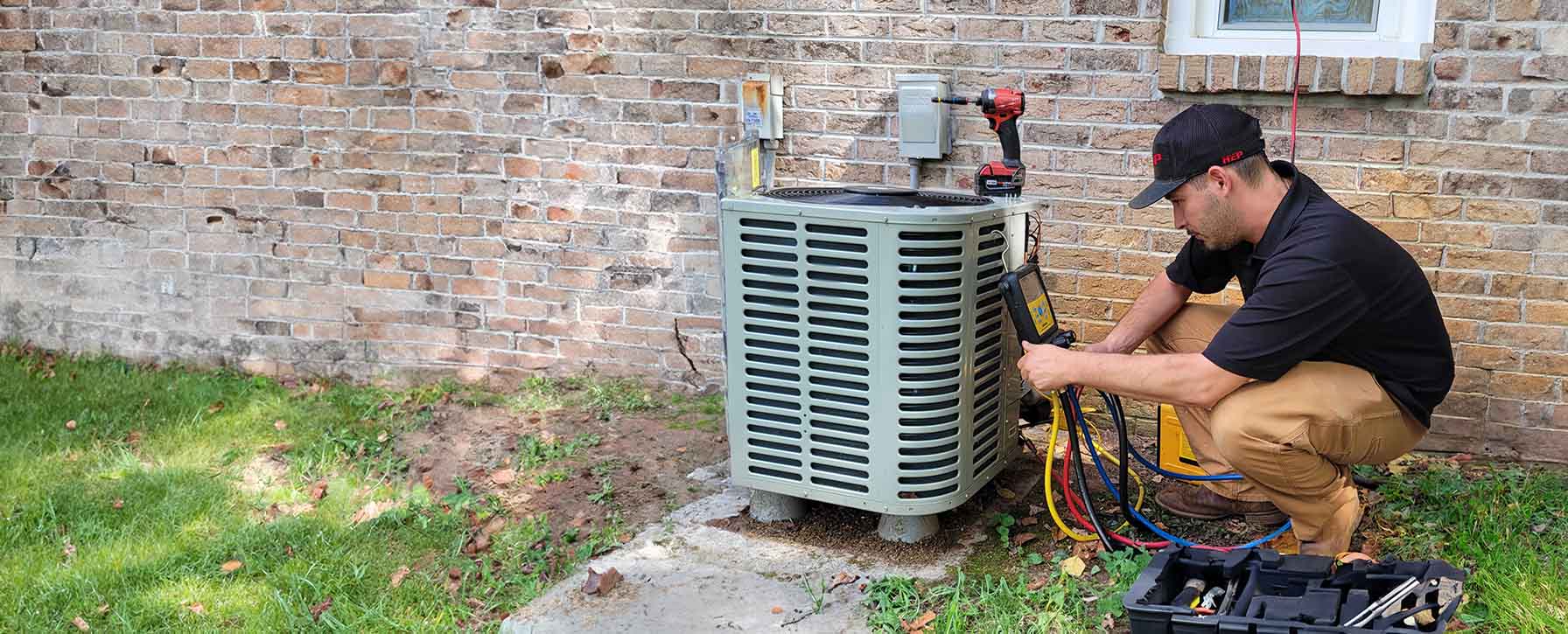

Indoor Air Quality
Your trusted partner for professional home services. Quality workmanship, guaranteed satisfaction.




- HEP
- Indoor Air Quality
Indoor Air Quality | Dehumidifier Installation | Heating and Air Conditioning | Winfield
When Winfield’s summer humidity turns your home into a sticky sauna, HEP’s indoor air quality team is ready with precision dehumidifier installation that pairs seamlessly with your heating and cooling system. Our certified technicians assess moisture levels, sizing, and existing HVAC equipment to recommend a whole-home solution that quietly extracts excess dampness, eliminates musty odors, and safeguards woodwork, electronics, and treasured belongings from mold and mildew.
From the first call to the final walkthrough, you’ll experience the courteous service Winfield homeowners have trusted for decades. We schedule at your convenience, arrive on time, protect your floors, and explain every feature so you can monitor humidity with confidence. Breathe easier, feel lighter, and let your AC run less—HEP delivers the comfort you deserve, one perfectly balanced home at a time.
FAQs
Why is a whole-home dehumidifier important in Winfield’s climate?
Winfield experiences hot, humid summers and fluctuating humidity levels year-round. Excess indoor moisture can lead to mold growth, musty odors, warped wood, and aggravated allergies. A professionally installed whole-home dehumidifier removes this excess humidity, keeping relative indoor humidity in the ideal 45–55 % range, which protects your home, improves comfort, and supports better indoor air quality.
How does a dehumidifier integrate with my existing heating and air-conditioning system?
A whole-home dehumidifier is plumbed into your supply and/or return air ductwork, typically near the air handler or furnace. As conditioned air passes through, the dehumidifier extracts moisture and drains it away via a condensate line. The unit works in concert with your thermostat or a dedicated humidity controller, turning on only when indoor humidity rises above your chosen set point. Because it shares the duct system, the dried air is evenly distributed to every room without additional equipment.
What size or capacity dehumidifier do I need for my home?
Capacity is measured in pints of water removed per day. Sizing depends on square footage, typical humidity levels, insulation quality, and sources of moisture (crawl spaces, basements, large showers, etc.). For most Winfield homes, units in the 70–100-pint range are common, but large homes or severe moisture issues may require 120-pint or higher. During your in-home assessment, our technician measures indoor RH, evaluates your HVAC load, and recommends a model that balances performance and energy efficiency without over-drying the air.
What is the typical installation process and how long does it take?
Installation generally takes 3–6 hours. We start by selecting a location with adequate clearance for service. Next, we cut access holes and attach insulated flex or hard duct to the existing supply/return trunks. The unit is leveled on vibration-absorbing pads, connected to a dedicated 120 V or 240 V outlet, and plumbed to a nearby drain or condensate pump. Finally, we calibrate the onboard humidistat, verify proper airflow, and show you how to adjust settings. Your HVAC system remains operational during most of the process, so downtime is minimal.
Will adding a dehumidifier increase my energy bills?
A whole-home dehumidifier draws electricity, but it can reduce overall energy costs by allowing you to set the thermostat a few degrees higher without feeling muggy. Removing moisture also lightens the latent (humidity) load on your air conditioner, letting it cycle less frequently and run more efficiently. Many homeowners see a net reduction in summer cooling expenses, and modern ENERGY STAR® rated models use as little as 4–6 ¢ of electricity per hour of run time.
How do I maintain a whole-home dehumidifier to ensure long-term performance?
Maintenance is straightforward. Every 6–12 months, replace or clean the air filter, check and clear the condensate line, and vacuum the grille to remove dust. During your annual HVAC tune-up, our technician will clean the internal coil, inspect electrical connections, and verify refrigerant pressures. Keeping the surrounding area free of clutter and ensuring the drainage slope remains correct will prevent leaks and improve efficiency. Most units last 10–15 years with regular care.